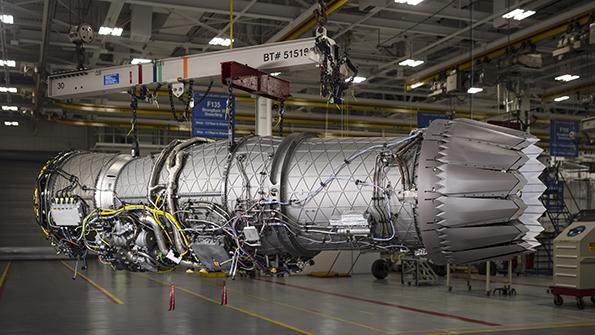Opinion: Why The Pentagon Should Modernize The Existing F135 Engine

Over the past year, the public debate on how best to modernize the F-35’s propulsion system has dragged on. We have heard from the military services, the partners and the contractors—no shortage of analyses have looked closely at the potential pathways ahead, which will have major implications for the entire program. The facts and data are clear. It is time for us to modernize the F-35’s existing engine, the F135, and dispel the notion of a second engine once again.
A package of new weapons systems and other planned upgrades for the F-35, known as Block 4, will increase the demands for power and cooling on the engine even further beyond its original specification. Running the engine past its original specifications to meet these needs will shorten its life and increase sustainment costs. Modernizing the existing engine to meet the demands of the F-35’s Block 4 upgrades will allow us to enable critical combat capabilities our warfighters require and at the same time extend engine life and lower sustainment costs. In fact, a block upgrade for the F135, known as the Enhanced Engine Program, is projected to save the F-35 enterprise $40 billion over the program’s lifetime.
Some have argued we should replace the F135 engine instead of modernizing it. They point to the U.S. Air Force’s Adaptive Engine Transition Program (AETP) as an option for future F-35 propulsion. This is a costly and risky proposition. For one, the current AETP engine options can fit into only the conventional-takeoff-and-landing variant of the F-35 used by the Air Force. It requires substantial airframe modifications to fit in the F-35 carrier variant used by the Navy. The AETP engines also are incompatible with the short-takeoff-and-landing variant used by the Marine Corps. The bedrock principle of the F-35 program from the very beginning was commonality. We would build an aircraft as capable as the venerated F-22 Raptor while using a common airframe and engine to maximize economies of scale and allow training, maintenance and supply interoperability with our international partners to lower costs. It is a concept embedded into the very name, the Joint Strike Fighter.
We must also consider the timeline associated with propulsion modernization. The warfighter needs Block 4 as fast as possible. The AETP engine is still a development project that requires billions of dollars more in investment and a steep learning curve. By upgrading the current engine and leveraging its existing production capability and established maintenance network, we can deliver meaningful capability for our military services by 2030, years sooner than an AETP engine would. As recent world events have demonstrated, the threat is here now. We must deliver fully enabled Block 4 aircraft in quantities that matter as a deterrence as rapidly as we can.
The Air Force also must seriously consider if it is willing to sacrifice future F-35 tails in order to invest in a new engine. Today, the average fighter aircraft in the Air Force fleet is 28 years old. The F-35 is the only fifth-generation fighter in production in the U.S. or with our allies. Air Force Secretary Frank Kendall himself recently stated: “It’s an expensive engine. It takes a lot just to do the development—several billion dollars. [That] is, in rough terms, 70 F-35s. So are you prepared to have 70 less F-35s in order to have that engine in the ones that you do have?”
And that analysis only takes development costs into consideration. The Air Force estimates it will cost nearly $7 billion just to move an AETP engine into production. Furthermore, the initial costs for a new engine production line and duplicative sustainment network will be high as the industrial base establishes and trains a new workforce, acquires the necessary machinery and learns from its mistakes. The F135 costs 50% less today than it did when the first production engine rolled off the assembly line. It would be a mistake to throw away all those affordability investments and sacrifice F-35s in favor of a new engine, leaving our military services with a capability gap that our aging fighter fleet cannot fill.
The F-35 is the largest defense procurement program in history. At the end of the day, the F-35’s greatest assets are its economies of scale and greater interoperability with our allies. Seeking a replacement engine for the F-35 puts those and the entire program at risk.
Rep. John B. Larson, a Democrat, represents Connecticut’s first congressional district and is the longest serving co-chair of the Joint Strike Fighter Caucus.

Comments